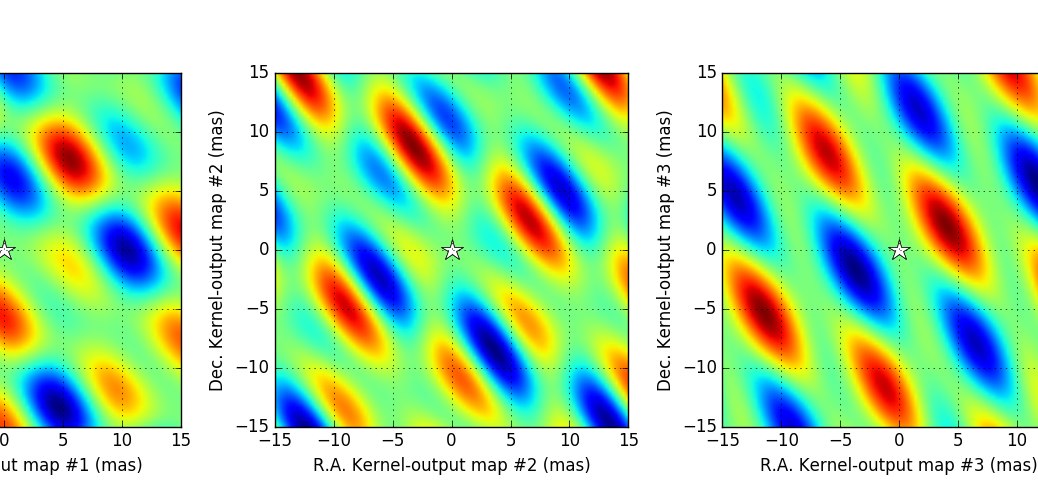
A new paper posted on arxiv by Frantz Martinache & Mike Ireland.
https://arxiv.org/abs/1802.06252
Abstract:
Combining the resolving power of long-baseline interferometry with the high-dynamic range capability of nulling still remains the only technique that can directly sense the presence of structures in the innermost regions of extrasolar planetary systems. Ultimately, the performance of any nuller architecture is constrained by the partial resolution of the on-axis star whose light it attempts to cancel out, and the design of nullers focuses on increasing the order of the extinction to reduce the sensitivity to this effect. However from the ground, the effective performance of nulling is dominated by residual time-varying instrumental phase errors that keep the instrument off the null. This is similar to what happens with high-contrast imaging, and is what we aim to ameliorate. We introduce a modified nuller architecture that enables the extraction of information that is robust against piston excursions. Our method generalizes the concept of kernel, now applied to the outputs of the modified nuller so as to make them robust to second order pupil phase error. We present the general method to determine these kernel-outputs and highlight the benefits of this novel approach. We present the properties of VIKiNG: the VLTI Infrared Kernel NullinG, an instrument concept within the Hi-5 framework for the 4-UT VLTI infrastructure that takes advantage of the proposed architecture, to produce three self-calibrating nulled outputs. Stabilized by a fringe-tracker that would bring piston-excursions down to 50 nm, this instrument would be able to directly detect more than a dozen extrasolar planets so-far detected by radial velocity only, as well as many hot transiting planets and a significant number of very young exoplanets.





 Because of the exquisite level of wavefront control they enable, extreme adaptive optics (XAO)-fed instruments like
Because of the exquisite level of wavefront control they enable, extreme adaptive optics (XAO)-fed instruments like 
